|
Making Oregon Grape Jam Kem Luther August 2008 Send comments to kem.luther@sheridanc.on.ca |
On this page we will walk, step by step, through the process of making Oregon Grape jam. Two species of Oregon Grape, Mahonia nervosa and Mahonia aquifolium, are common native plants of the Pacific Northwest. They are abundant on Vancouver Island, most often occurring in the understory of Douglas Fir forests. Given the right conditions an Oregon Grape plant can bear abundant fruit. We call the fruits "grapes," although Mahonias are not closely related to domestic grapes (genus Vitis). The small grapes on the plant, which are highly acidic (sour), hold little attraction to human grazers. But they make a delicious jam. On August 12, 2008, I found a large stand of fruiting Oregon Grape along near my home. It was Dull Oregon Grape, Mahonia nervosa. At the right you see one of the plants and its fruit cluster. I pulled a bag from my pocket and In about fifteen minutes I had picked six pounds of grapes, leaving behind lots of fruit for the birds and bears. |
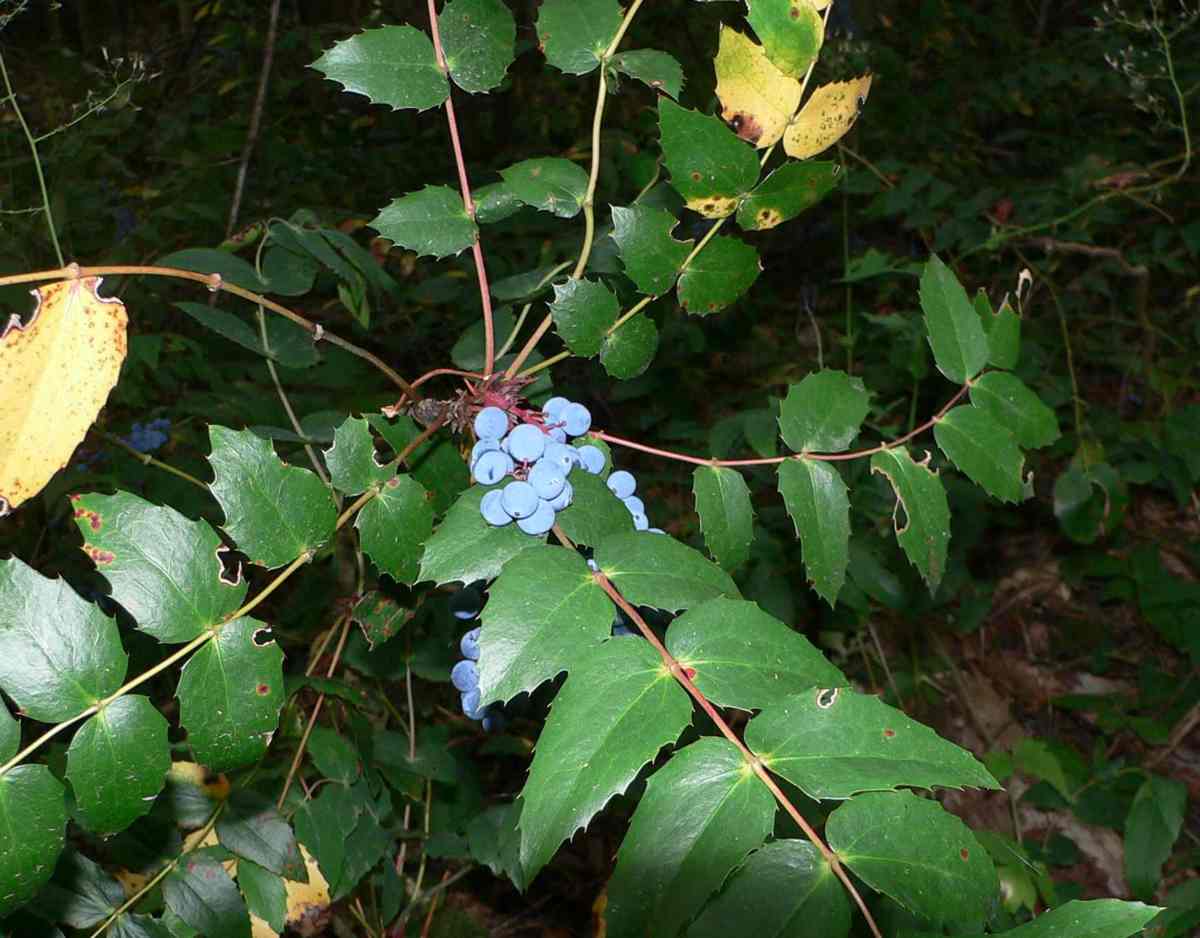 |
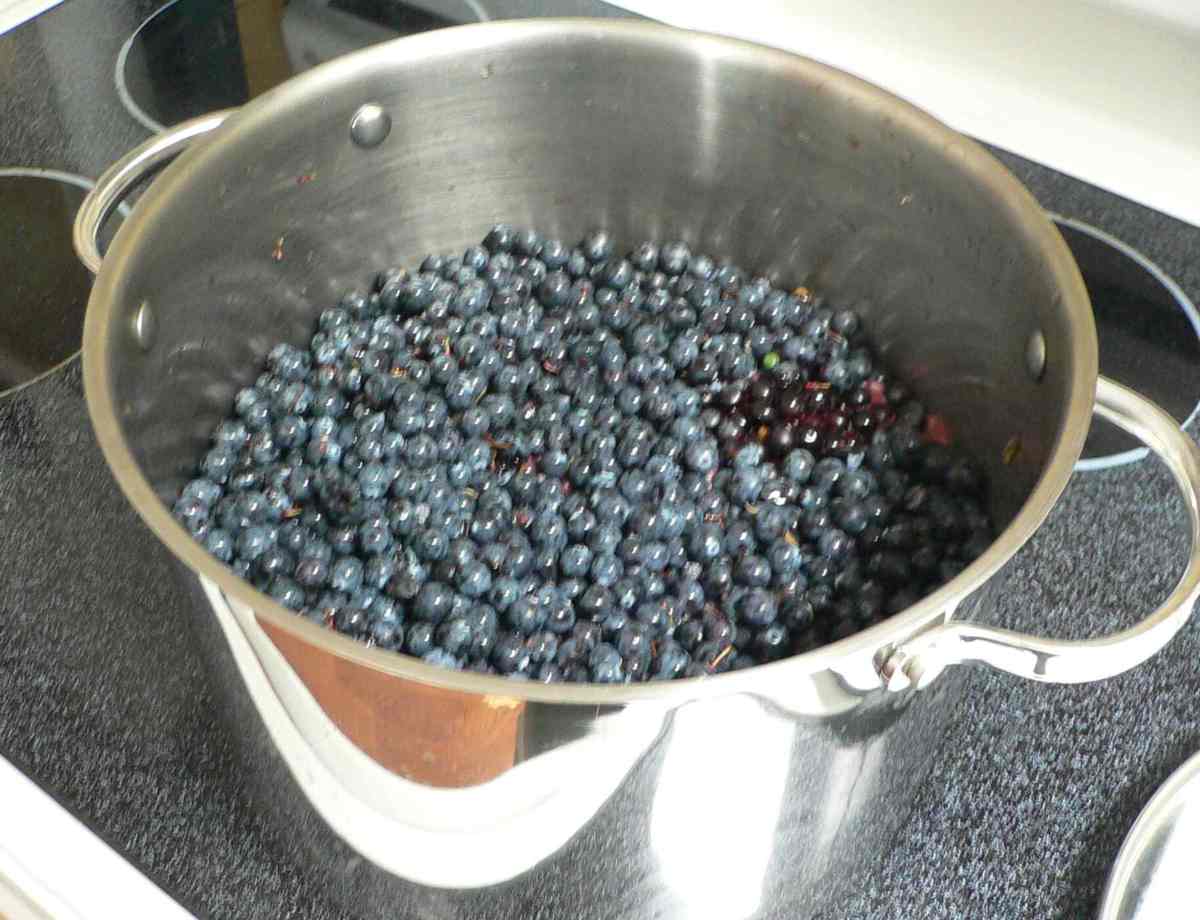 |
I brought the grapes home, dumped them into the sink, and separated the berries from the stems. I picked out stray leaves and woody pieces and transferred the berries into a large kettle. You see the kettle and berries at the left. I had about 20 cups of fruit (I didn't run much water over the berries while cleaning them--that would have rinsed away too much of the tasty juice.). I added two cups of water to the kettle and brought the berries to a boil. I stirred the mixture a few times while it was coming to a boil. I let the berries boil for about fifteen minutes. They turned into mush and the seeds and skins began to separate from the pulp. |
To make Oregon Grape jam I needed to extract both the pulp and juice from the boiled mixture. If I had been making Oregon Grape jelly, I would only have wanted the juice, so I would probably have sieved out the juice with a collander and cheesecloth. To get both the juice and the pulp, the best device to use is a Foley food mill. I foleyed the boiled mixture in three batches (see picture at the right) and ended up with about three quarts of pulp and juice. The seeds and skins went into the compost. |
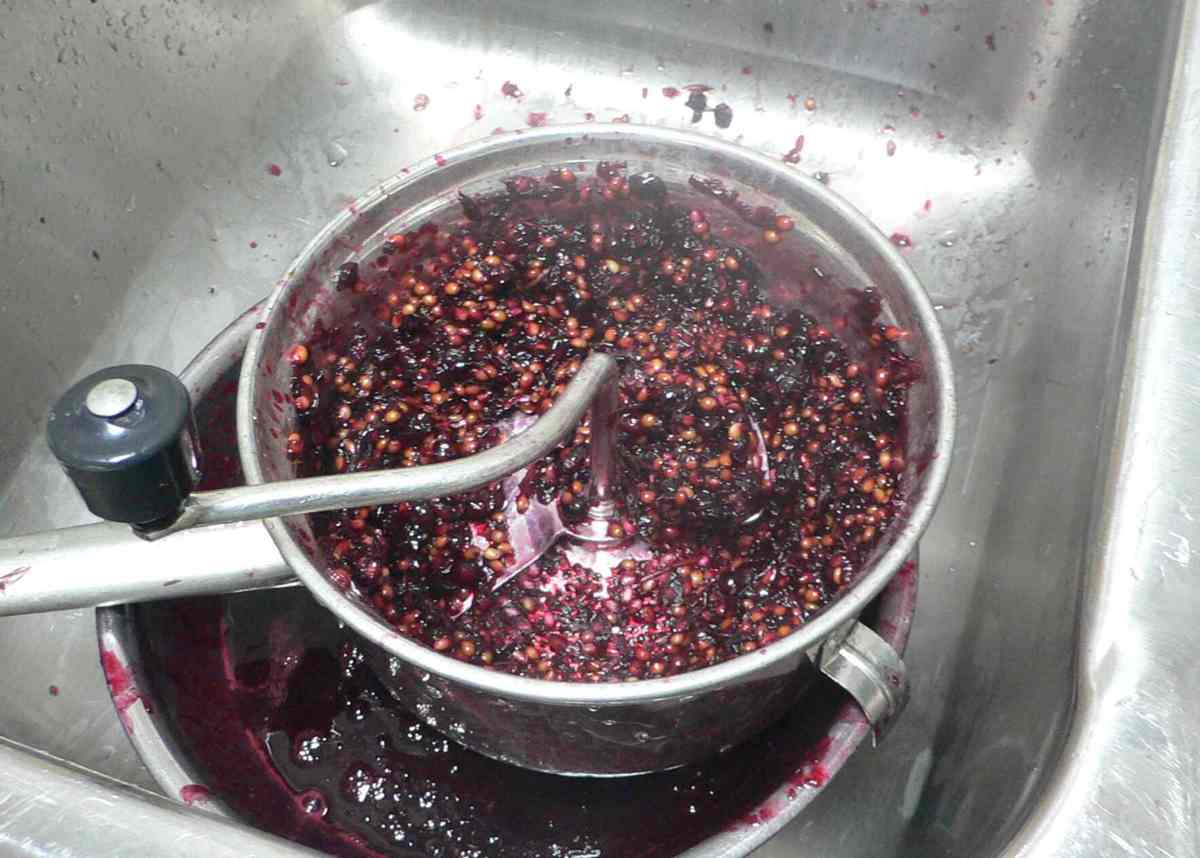 |
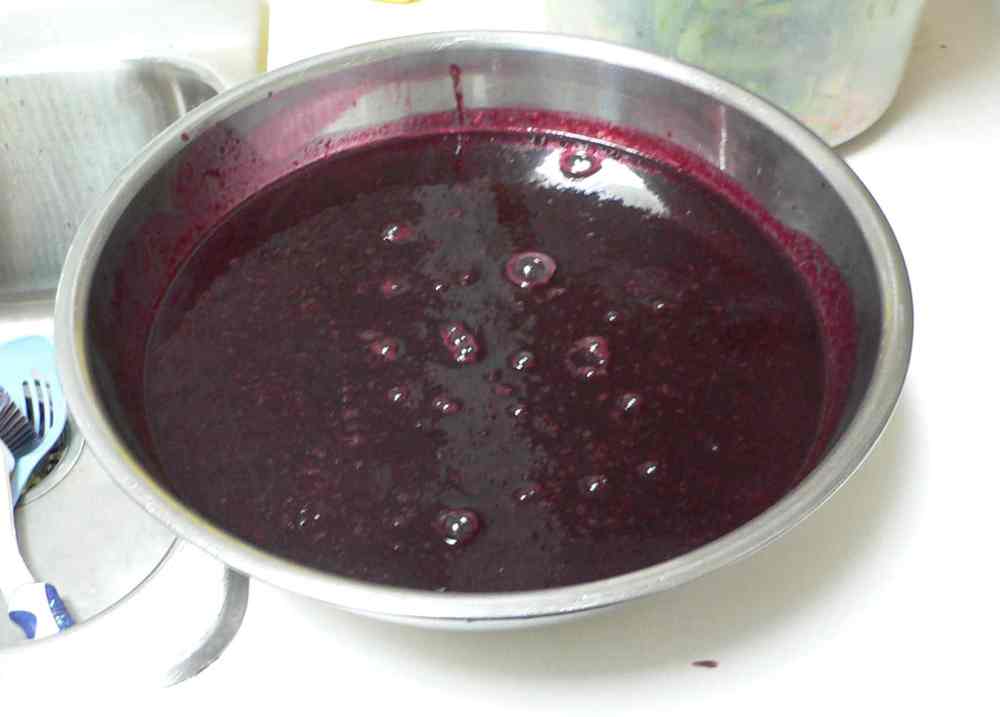 |
You see the extracted pulp and juice at the left. Notice that I use metal pans to make jam. Some juices--and this is one--are potent dyes and will lend a permanent color to anything that isn't metal. I put the mixture back into the cleaned out kettle and brought it to a boil again. |
I next added a quarter of a cup of concentrated lemon juice. Jams and jellies only need lemon juice when they are made from low-acid fruits, but I have gotten into the habit of putting a little lemon juice in all my jams. Enhances the flavor, in my opinion. You could probably leave it out of Oregon Grape jam with no consequences. |
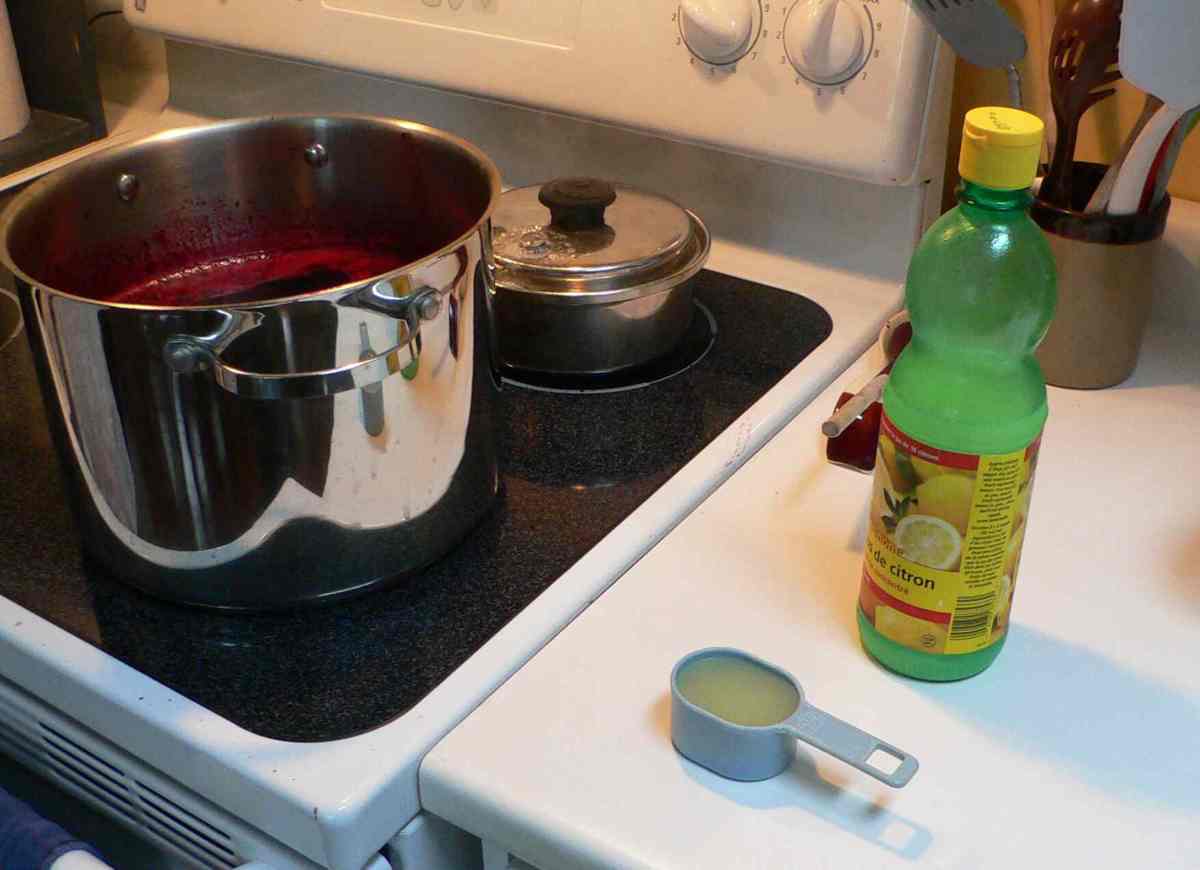 |
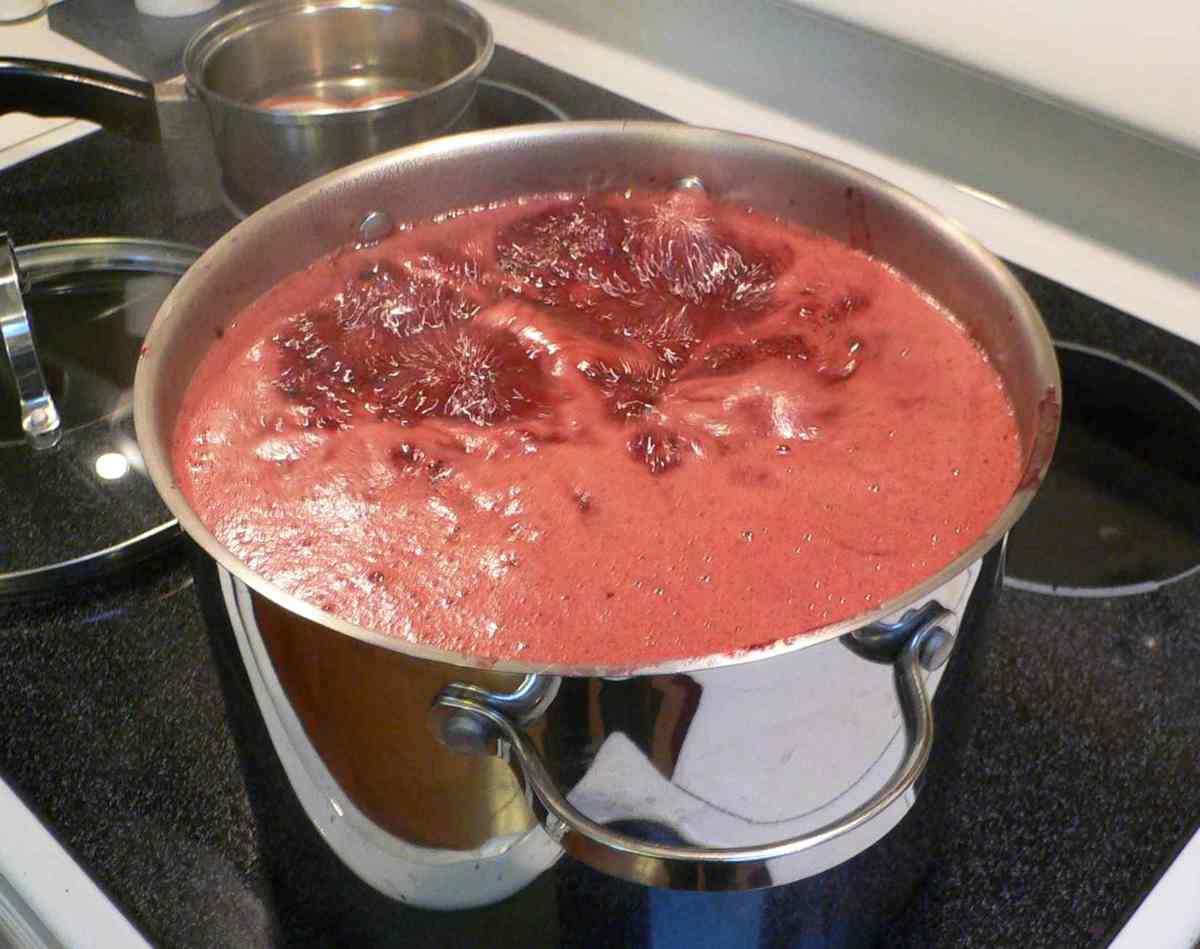 |
I added the sugar and a packet of pectin to the fruit pulp and juice mixture and brought it all to a boil, stirring regularly. The pectin comes in a 50-60g (1/4 cup) package. The amount of sugar is determined by how sweet you want the jam and how acidic the berries are. I usually add sugar, taste, add sugar, taste, etc., until I have the right combination. I boiled the jam for a minute or two. |
Before making the jam I had washied and sterilized enough jars to hold about four and half quarts of jam. I took the boiling mixture from the stove and immediately ladeled it into the cleaned jars. I wiped off the glass rim of the jars, put on a heated canning lid, and tightened a screw lid onto each of the jars. Some jam was left over. I put this extra jam in a pop-top container and placed the container in the fridge. The jam in this container will be the first jam to be consumed. Over the next couple of hours the jars will seal (i.e., the lids will pop down). The sealed jars will go into the pantry for later use. |
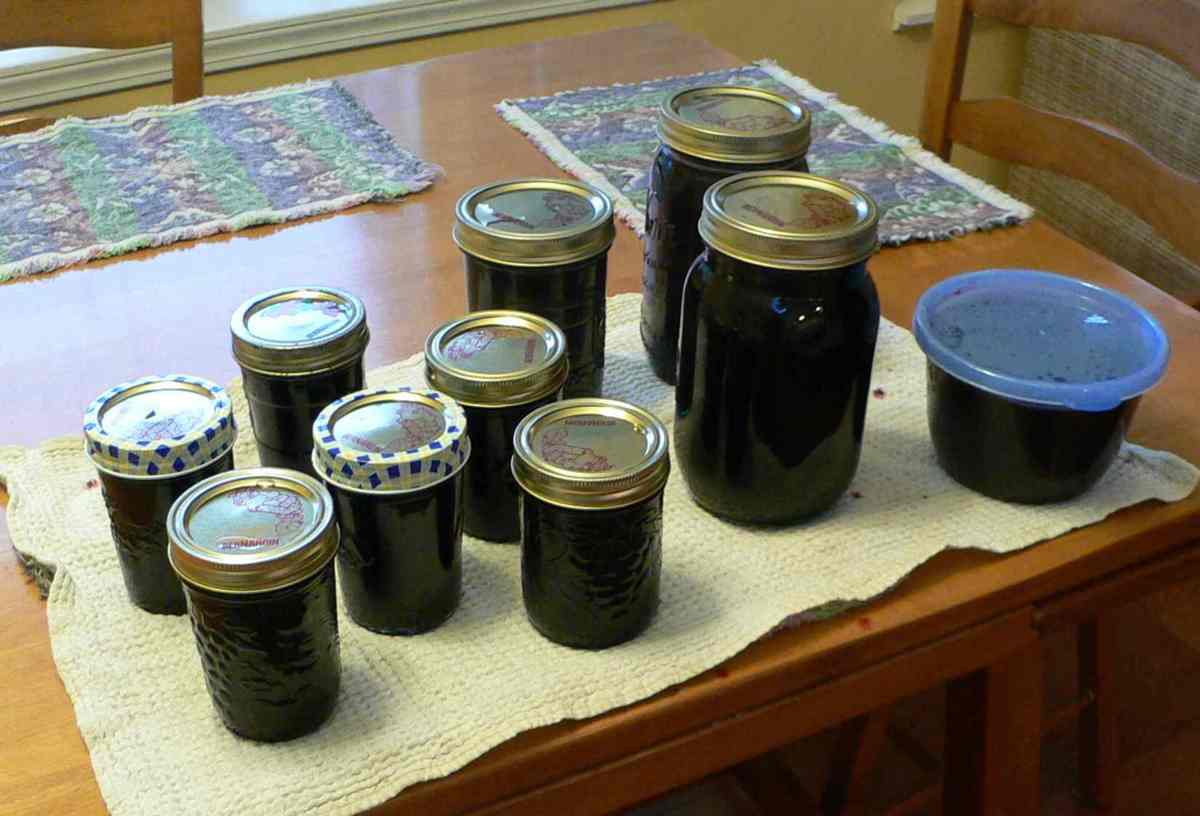 |
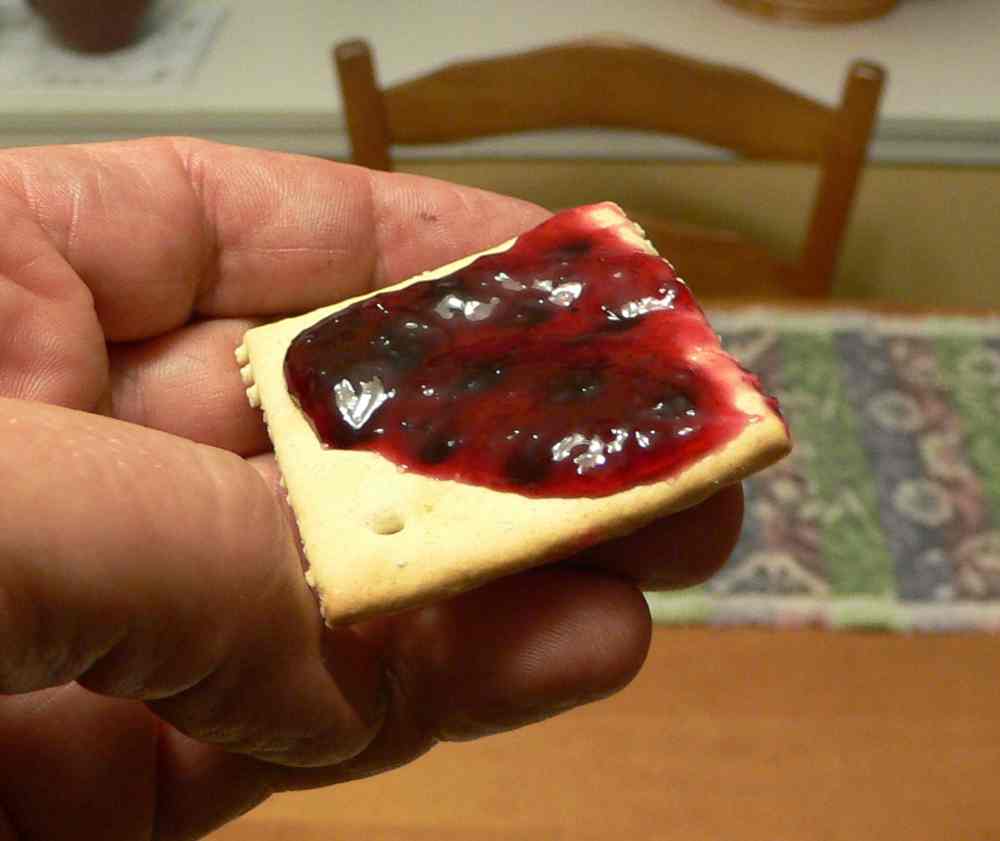 |
When the container that I put in the fridge has cooled, I take it out and check the consistency of the new jam. It seems about right. I spread a dollop onto a cracker and taste. You will find this jam has a distinctly grapey taste, but it has a wider flavor spectrum than jam made from concord grapes. I'm a fan of the wild, sharp flavor of Oregon Grape jam. Your taste buds will have to make their own decisions.
|
Something good can be made even better. The acidic Oregon Grape berries blend well with blander fruit. My favorite blend is with the non-native Himalayan Blackberries that are so abundant along roadsides in the Pacific Northwest. In two weeks the blackberries will be at their peak. I could store the pulp and juice from the Oregon Grapes in the fridge until I collect enough blackberries, but I find it just as easy to make the jam when Oregon Grapes are most abundant and blend the completed jam with the blackberry jam. The recipe for blackberry jam is the same as the one for Oregon Grape jam--just use two cups less sugar. When the blackberry jam is boiled and ready to put in jars, I'll open enough Oregon Grape jam to make a 1:1 (more or less) Oregon Grape/Blackberry mixture, bring everything to a good rolling boil again, then seal the blended jam in jars, rinsing and reusing the jars from the Oregon Grape jam and preparing enough new jars to hold the mixed jams. The result is, hands down, one of the world's most delicious jams. |
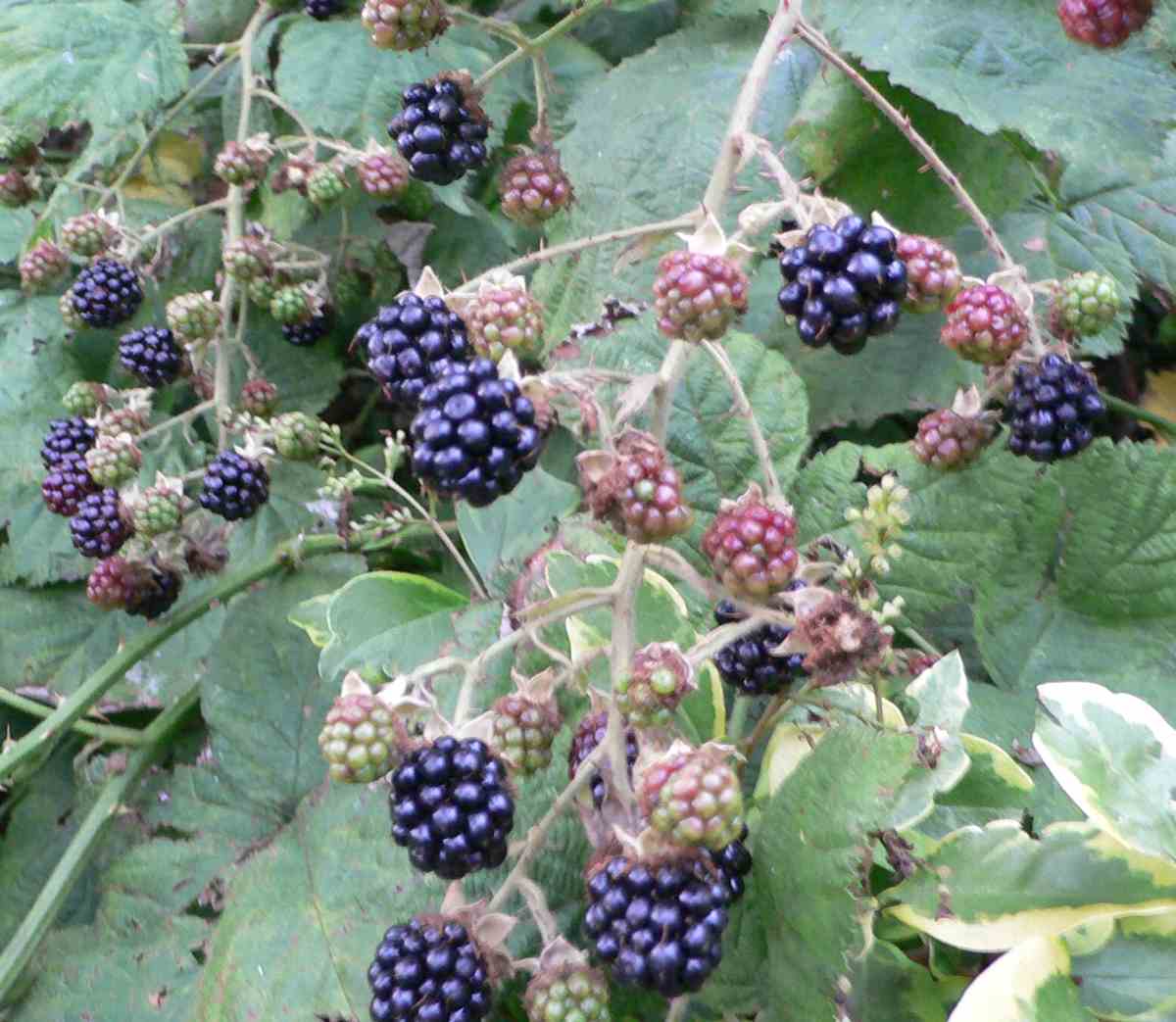 |